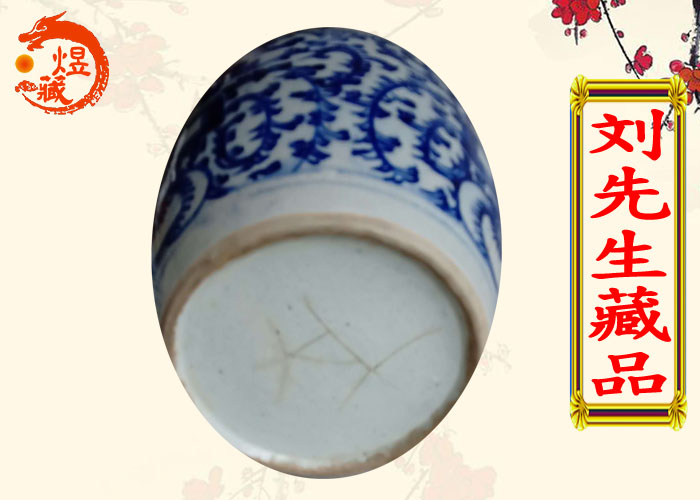


清代时期,青花瓷器占主导地位,上服务于皇室,下普及于民间,外远播于世界。无论是在工艺技术,绘画水平还是产量方面都达到了历史上的又一高峰。皇宫内、外流传至今的清代青花瓷器,数量之多,品种之繁,是非常惊人的。它们不仅时代特征鲜明,而且烧造脉络清晰,为世人再现了清代青花瓷器的发展历程。
青花“喜”字罐,俗称为“喜字罐”,亦有“双喜”罐之说,顾名思义是带着吉祥喜庆的寓意。古代结婚都会订制“喜字罐”用来放喜糖等等,给民间婚嫁喜事增添了喜庆吉利的色彩,至今民间祖上为富豪大宅人家的家中仍可见到。“喜字罐”最早起源于元代,盛行于明清时期。清代青花喜字罐在当时是非常典型的器物,只有人们在婚嫁时期才会特意去定制烧制双“囍”罐,表达双方欢喜之意,一般不会像其他瓷器一样批量烧制。因其蕴含了古代文化,浓郁的喜庆气息,可在家中摆放观赏,有家庭美满幸福之意。
In the Qing Dynasty blue and white porcelain played a dominant role serving the royal family on the top spreading to the people on the bottom and spreading to the world on the outside. Whether in technology painting level or production has reached another peak in history. The Qing Dynasty blue and white porcelains circulated in and out of the Imperial Palace are amazing in number and variety. They not only have distinct characteristics of the times but also have clear firing veins which reproduces the development process of Qing Dynasty blue and white porcelain for the world.
Blue and white "happy" jar commonly known as "happy" jar also known as "double happy" jar as the name implies with the meaning of auspicious festivity. Ancient marriages would have custom-made "happy word pots" to put happy sugar and so on which added a happy and auspicious color to the folk wedding celebrations which can still be seen in the homes of the rich and big houses of folk ancestors. "Xizi pot" originated in the Yuan Dynasty and prevailed in the Ming and Qing Dynasties. Qing Dynasty blue and white font pots were very typical ob
清の時代、サバの磁器は主導的な地位を占めて、皇室に奉仕して、民間に普及して、外は世界に放送されます。工芸技術においても、絵画のレベルも生産量も歴史上のピークに達している。皇居内では、今までの清代のサバの磁器は、数の多く、品種の繁雑さは非常に驚異的である。彼らは時代の特徴が鮮明であるだけでなく、脈絡がはっきりしていて、人々のために清代のサバの磁器の発展の過程を再現しました。
「喜」という字の缶は、通称「喜字缶」であり、「双喜」の缶の言うこともあって、縁起のいいことは吉祥の意味を持っている。古代の結婚はいずれも「喜字缶」を予約して砂糖を入れるなど、民間の結婚の喜事に喜ばしい色を加えて、これまでの民間の祖先の大宅家の家の中でまだ見ることができます。「喜字缶」の最初は元代に由来し、明清の時期に盛んになった。清の時代は非常に典型的な器物であり、結婚した時だけはわざわざ「ω」を作って、お互いの歓喜の意を表して、他の磁器のように大量に焼かない。古代の文化、濃厚な祝賀の息吹が含まれているため、家の中で見物することができて、家族の幸せな幸福の意があります。